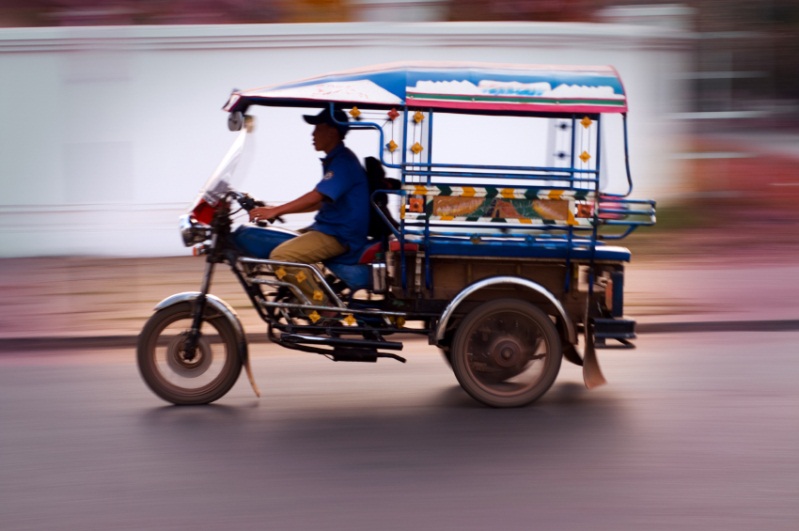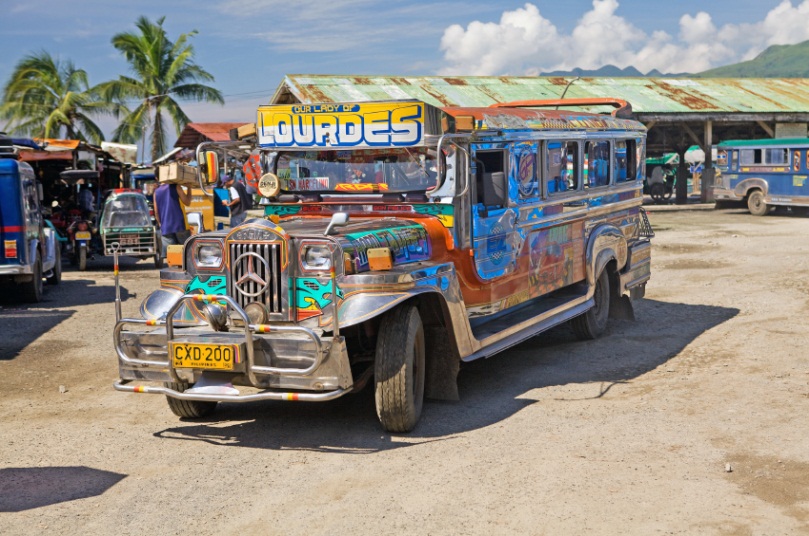
Here in North America, our public transportation is pretty standard—metros, buses, and taxi cars help us get around from work, to home and even across the country. But if you travel to India, or Thailand, you might be shocked to see an auto rickshaw pull up instead of a car when you hail for a taxi.
Around the world, different countries have developed unique ways of helping their citizens get around cities. Sometimes, these means come out of necessity; sometimes they become tradition—like jeepneys in the Philippines.
If you’re planning to enroll in auto school to become an automotive service technician, read on for a taste of some of the most unique public transportation vehicles from around the world, and how they came to be.

A Transportation Staple Around the Globe: Auto Rickshaws
Auto rickshaws are a motorized version of the traditional human-powered rickshaws which originated in Japan in the 1800s. Today, these small vehicles serve as the taxi service in developing countries all around the world, most notably India.
Auto rickshaws typically feature space for up to three passengers and a driver (although some are 7-seaters!), and have one wheel in the front and two in the back. Students entering mechanic college might find it interesting to note that auto rickshaws almost always have handlebar-style steering, just like a motorcycle.
As new developments are made in electric technology, many countries have proposed moving towards electric auto rickshaws, which would help cut down on pollution in major cities. Development and production of e-rickshaws is currently being headed by China, with India and Bangladesh not far behind. The typical range of an e-rickshaw is 97-161km per charge, with an average charging time of 4-6 hours.

Jeepney Buses Rule Metropolitan Philippines
The jeepney is a staple of Philippines’ culture, and can be seen on the roads of any major city in the country, specifically Manila. Today’s jeepneys are decked out with a multi-coloured paint job and adorned with various doodads like tassels and lights—but they weren’t always this way. This eclectic form of public transportation has an interesting history that dates all the way back to the American occupation of the Philippines during WW2.
After the war ended, the American military sold their leftover military Jeeps to locals for cheap. Locals stripped down these Jeeps and re-modelled them, adding extensions to turn them into a low-price mode of public transportation. Over time, jeepney manufacturing companies began popping up all over the country, specializing in building original jeep-bus designs.

The Dreaded Camel Bus in Cuba
We’ve already looked at motorcycle-style transportation and inner-city buses, but Cuba trumps them all with their “trailer-style” public transportation. Professionals in auto careers may have heard of Cuba’s infamous “camel buses”, a mashup of a trailer tractor and a bus, capable of carrying 200-300 passengers at a time. These camel buses are a symbol of Havana’s austerity age, which occurred after the fall of the Soviet Union in the 1990s. In Cuba, these buses have garnered much dislike by the locals who are forced to use them, with complaints that they’re overcrowded and hot, with very poor ventilation.
As of now, the aging camel buses are being slowly phased out, in favour of modern Yutong buses imported from China. However, those waiting at bus stops are never quite sure if they’ll get one of the sleek, air conditioned buses from China, or a stuffy uncomfortable camello bus.
What kind of automotive features would you add to a jeepney or an auto rickshaw to make it safer?


